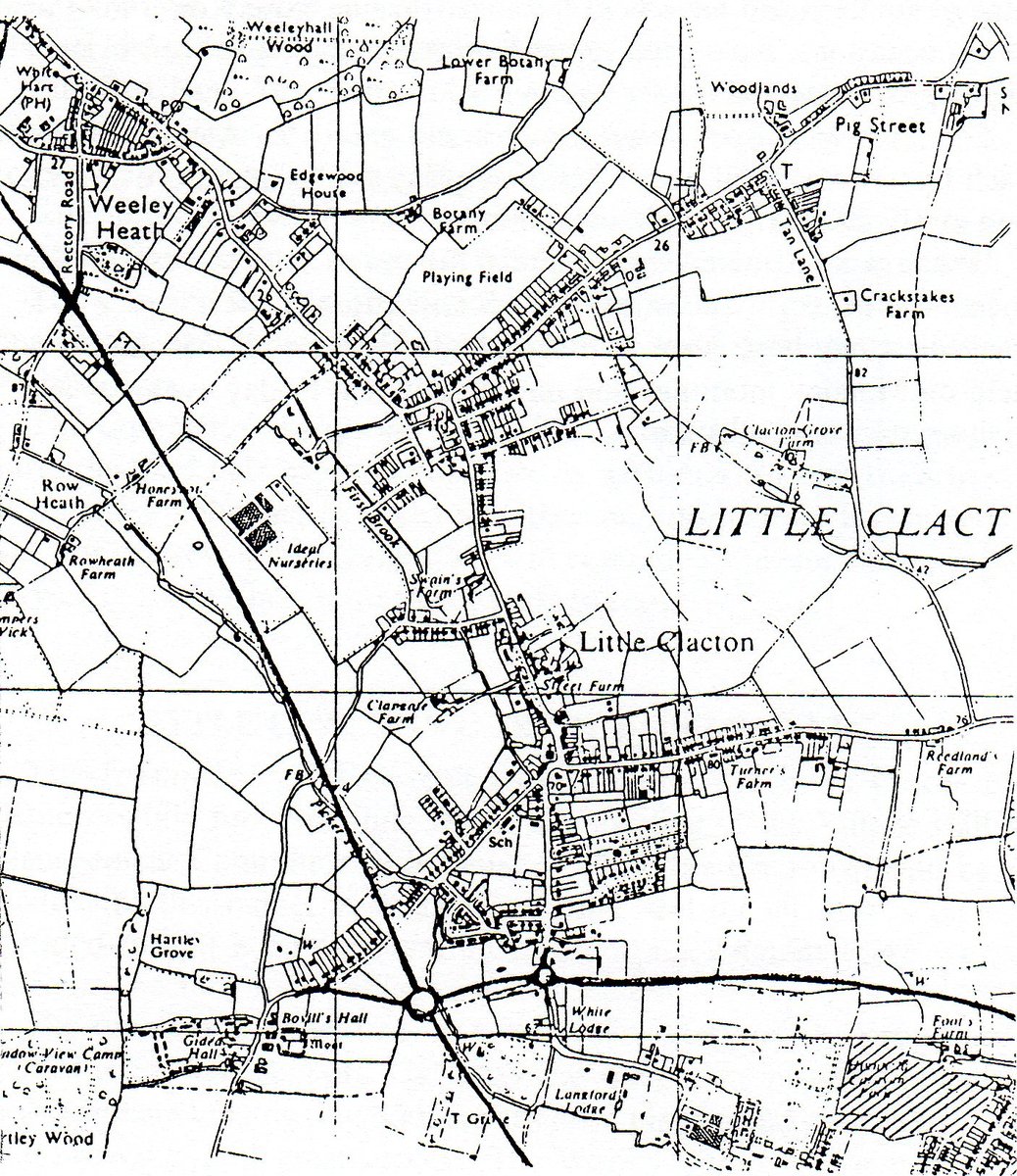A century of service
To commemorate its first hundred years as a local authority
THE LITTLE CLACTON PARISH COUNCIL
is pleased to produce this brief record of its activities since its formation in 1894 and to add accounts of those village organisations who have kindly submitted material for inclusion.
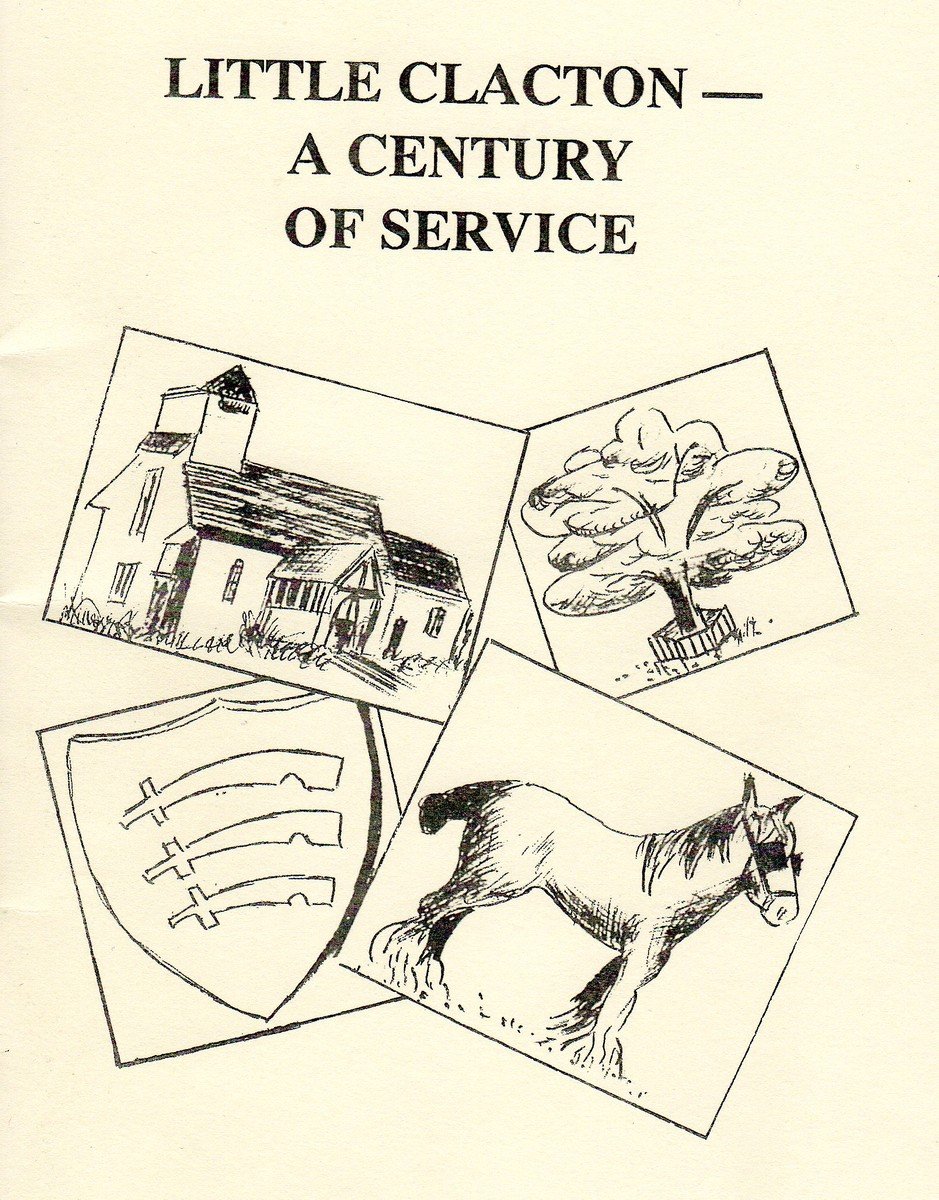
Little Clacton - A Century Of Service (view or download pdf scan)
PREFACE
The story of Little Clacton, first published in 1958 and updated in 1982, is our village history. This publication is a companion volume produced to celebrate the centenary of the Parish Council. The first Parish meeting under the Local Government Act of 1894 was held in December of that year, when 7 Councillors were elected. They met quarterly; now there are 13 members who meet monthly.
Mrs Pat Keeble, a life-long member of the village and a Parish Councillor of 18 years standing, undertook the mammoth task of reading the minute books of the last 100 years and making copious notes. Village organisations were asked to contribute their histories over the same period. By this means we hoped to have a full picture of the village and its activities.
Again we called upon the local historian Mr Kenneth Walker, who graciously accepted the work of assembling and editing the material. We are most grateful for this and for the advice he has given us as an experienced local historian in the preparation of this book.
Mrs Lynette Darnell has been the prime mover in collating the material and photographs and for arranging for the publication.
We have not been able to include all we would have liked in this book. Much has happened over the last 100 years. This is but a brief record of a village which is very much alive.
ACKNOWLEDGEMENTS
The publication of this book was made possible by the work of Mrs. P. Keeble, Mrs. L. Darnell and Miss N. Pannell to whom we offer our sincere gratitude. Thanks are also due to the Village Organisations which contributed their histories and to members of the village who lent photographs, also to Mr. M. Cooper for designing the front cover.
Thanks to Essex Phototypesetting and Tendring District Council Print Unit for typesetting and printing.
Photos kindly provided by:
Mrs. S. Cooper, Miss A. Cleare, Mrs. J. Lawrence, Mrs. J. Chumley, Mrs. P. Keeble, Mrs. D. Walker, Mrs. L. Darnell
A HUNDRED YEARS AGO
A century ago the village of Little Clacton still retained its old rustic atmosphere and with a population approaching six hundred most of its householders were employed on the surrounding farms.
The new resort of Clacton-on-Sea must have then seemed quite remote, for as yet it had little impact on village life. Most of the visitors who poured into it during the summer months travelled by train or pleasure steamer and comparatively few jolted down the village street on their way to the sea, or were attracted by its rural charm.
The village centre had developed along each side of an old highway near the ancient Parish Church of St. James. Here was a medley of crude thatched cottages and later brick villas and amongst them were the Blacksmith’s Arms and Apple Tree inns, the more pretentious Street Farm and the prim little (Wesleyan) Methodist Chapel.
The cottage adjoining the Church was occupied as the village store which combined the businesses of both grocer and draper with that of a post office which dealt with mail and little more. Letters were conveyed on foot to and from Weeley! Two other shops on the other side of the Street also sold groceries but would have enjoyed only a modest trade.
Here lived the village craftsmen, the traditional blacksmith, carpenter, wheelwright, thatcher and bootmaker, along with the sweep and the mole catcher. Here too however were the more up to date machine proprietor, engine driver and machinist.
Beyond the substantial Early Victorian Vicarage was the Parochial School, a building since put to commercial use. The average daily attendance was then 87 girls and boys, most of whom would receive their entire education within its walls.
Surrounding the village centre was a patchwork of fields much as we see them today, with a scattering of farms and cottages and a pattern of roads that changed little with the passing centuries. Here were the hamlet of Pig Street, the Harrow, Plough Corner and Calves Lane, names that bore witness to centuries of husbandry.
But in 1894, however, ambitious schemes were already afoot to develop a considerable part of the parish as a housing estate and the Cavendish Land Company, that year, sold some 500 acres for this purpose, though very little progress was to be made.
* * *
A hundred years ago Queen Victoria was nearing the end of her long reign and few would have remembered any other monarch. These were patriotic times and her portrait, doubtless, adorned many a cottage wall, sharing it perhaps with the grim features of Gladstone the veteran Prime Minister who ended his fourth term in office early that year.
The pattern of government was already becoming complex. The Essex County Council had been recently established and Little Clacton was in its Walton Division. The parish had formerly been responsible for the care of the poor, but this service was now administered by a Board of Guardians that operated from Tendring and on which Little Clacton was represented.
Local government had once centred on the Parish Church where the annual Vestry exercised control. With increasing national concern for public health however, new measures were introduced and in 1872 the Guardians were allocated additional functions, forming for this purpose a separate body known as the Tendring Rural Sanitary Authority.
To exercise further local powers an Act was passed in 1894 creating yet new bodies. The Rural Sanitary Authority was to become the Rural District Council (and it so remained until 1974) and parishes with a population of over three hundred were empowered to form Parish Councils.
It was as a result of this legislation that Little Clacton Parish Council assumed its functions on 1 January 1895.
THE PARISH COUNCIL
It was at a Parish Meeting held in the former village school on Tuesday, 4 December 1894, that the first Parish Council was elected by a show of hands. There were eleven candidates nominated for the seven seats, the result and the votes obtained were as follows:
Elected:
William Webb (Pork Butcher) 41
William Manning (Blacksmith’s Arms) 34
James Bines (Carrier) 32
Charles Bareham (Farmer, Stone Hall) 28
John Smith (Farmer, Bovills Hall) 26
Horatio Simmons (Machinist & Farmer) 21
Henry J . Scragg (Farmer, Grove Farm) 20
Not Elected:
George K. Ault (Machinist) 18
Thomas O. Beardmore (Schoolmaster) 15
Abraham Fisher (Farmer, Clapgate) 10
John F. Baxter (Gentleman) 7
Manning demanded a poll of the parish and when the new Council met for the first time on New Years Eve in the School, Beardmore had taken his place. Manning made a similar demand at the next election a year later after he had just been defeated.
The contemporary press report is fuller than the minutes in its account of this first meeting. The new members, having signed the required declaration, “proceeded to the election of Chairman. — It was proposed and seconded that Mr. C. Bareham be elected Chairman of the Council. He however, briefly acknowledged the compliment and declined that honour. — It was then proposed by Mr. J. Smith seconded by Mr. Simmons, that Mr. H. J. Scragg be Chairman of the Parish Council — Carried unanimously — The appointed Chairman, after an expression of thanks for the unanimous vote accorded him, proceeded to the business of the meeting. Mr. C. Bareham was elected Vice-Chairman. The appointment of Treasurer was left over for the present. The Assistant Overseer (Mr. H. Eldred) was appointed Clerk.”
Henry Eldred thus already held a similar office and two years later it was minuted that his total salary was to be £ 17.2s. (£17.10) per annum. Since that time the Clerk’s salary has increased somewhat above this amount!
The first meeting did not attract much enthusiasm, for the presence of only two other parishioners was recorded in the minutes and this set the subsequent pattern except when matters of public concern were on the agenda. On this occasion little more than Hubbard’s Charity was discussed.
Subsequent Changes
During the century that has since elapsed, the range of the Council’s activities has steadily increased and from being a public health body it has become involved directly or indirectly in nearly every local concern and has served as a means of communication between the parishioners and other authorities. From time to time committees have been appointed to deal with specific functions.
Councillors were once elected by a show of hands at the Annual Meetings and the present voting system was introduced in 1949. Their number has increased from the original seven to nine in 1933 and subsequently to eleven. The franchise has also been extended, for in 1894 women were not eligible to vote and twenty-one was the minimum age. The venue for meetings was transferred to Engaines School when it was opened and to the Village Hall in 1967.
The area originally controlled by the Parish Council coincided with the ecclesiastical parish of Little Clacton, but in 1934, 785 acres, with a population of about seventy, were transferred to the control of the former Clacton U.D.Council.
The following brief notes have been compiled from the Council’s minutes, conscientiously recorded during the last hundred years by a succession of Clerks in their own words.
Hubbard’s Charity
It is significant that the first matter to receive the attention of the Council was Hubbard’s Charity, a farm of twenty-six acres on the borders of St. Osyth, the rent of which for three hundred years had been expended for the benefit of poor parishioners. The Church officers had supervised the Trust, but this duty was now transferred to the Council.
There is an echo of times past in a Council minute of October 1895 noting that the income was to be distributed in coals, half before and half after Christmas. That the rent due for the lease of a charity coal shed had not been received, prompted the Council to lament “the poor have been so long debarred of their rights.”
That there was little further reference to the farm would imply that under the direction of the trustees the charity ran smoothly, but then in February 1944 they offered it for sale in the sum of £640 and a purchaser was soon found. Shortly afterwards Councillor Harvey gave a gift of £100, 2½% Consols. This fund became known as the Hubbard and Harvey Charity. In 1979 the Welbeck Foundation added a further £500.
Public Health
The Council was formed in an age still very concerned with ‘Public Health’, but this term was beginning to cover not only general hygiene, water supply and sewerage, but also the maintenance of highways and open spaces, street lighting and other matters, forerunners of the many services to be undertaken by local authorities.
The District Council was the public health authority, but certain duties fell to the Parish Council. In 1905 it agreed that foul ditches should be cleaned out five times a year, for they must then have received most of the foul effluent. The Council had already rejected a scheme for main drainage in the village centre because it was too expensive for the number of properties it would benefit and this opinion was again expressed on two further occasions.
In 1931 the Vicar was “called over the coals” for personally approaching Tendring in the matter instead of going through the Parish Council! Not until June 1951 was there a suggestion that a main drainage scheme was at last under way when complaints were made about pipes lying on the paths.
Water Supply
A hundred years ago the villagers depended on wells for their supply of fresh water and for those without this facility there was a village well. The Council in May 1903 requested that attention should be given to its pump.
A year later it was asked at a meeting whether there had been any notification of the laying of a main water supply to the village, but there is no reference in the minutes to its subsequent provision. In 1922 however it was noted that the fire stand pipe was to be kept in Frost’s blacksmiths shop.
Highways and Byways
Although the Parish Council has not been a highway authority, the condition of local roads and particularly of the main traffic route through the village, has been of major concern.
Within a year of its inception it made complaint to the District Council that the roads were being unsatisfactorily maintained, “occasioned by the men not being properly supervised,” and suggested that a parishioner should be appointed to assist the surveyor in supervising the work! The reply to this rather pert proposal is not on record. Some years later it was agreed to write to the District Council and congratulate it on the improvements to roads in its area except in the parish of Little Clacton.
In 1901 a request was made that Dead Lane should be put in order as it was almost impassable and very unsafe after dark and in 1948 Holland Road was said to be in a terrible state due to potholes etc. In 1987 the County Surveyor’s representative attended to hear complaints from the villagers that heavy traffic was using this road to reach the expanding Burrsville Industrial Estate.
The early roads required watering to settle the dust and in 1906, following an approach to the County Surveyor, it was reported that the Water Company were providing a cart for this purpose. The surfaces were subsequently tarred and in 1920 a letter of thanks was sent to the County Surveyor for mending and tarring the road through the village, but some years later he had to remind the Council that with this surface, sweeping twice a week was adequate, not daily as he had been requested.
The Parish Council has also approved the names for new streets and has renamed old ones — in 1931 Dead Lane became Elm Road and Thorpe Road became Harwich Road.
The Traffic Menace
Long ago the village developed either side of an ancient and meandering highway, but its peace was shattered when this became the main road into Clacton-on-Sea and was required to accommodate an increasing volume of traffic.
Motor vehicles had hardly made their appearance when, as far back as 1904, the Parish Council, with some presentiment, agreed to write to the County Council, that the speed of motor cars through the village was a “risk to life and limb at Church corner” — there could hardly have been a dozen a day! Again, three years later, complaint was made as to the danger here “from excessive motor traffic.”
Thus began a long running saga that for nearly a century has been the Council’s constant concern. In 1910 an unsuccessful application was made for a 10 m.p.h. speed limit through the village and in 1920 the AA was asked to have a man on duty to regulate traffic. Minor widening and improvements were undertaken, but the danger remained at Church corner at one end and Plough corner at the other. In 1923 the Council agreed to oppose a motor garage near the village Green, but garages inevitably came.
By 1935 road safety had become a national concern and it was reported that the village policeman was assisting school children to cross the road and that a 30 m.p.h. speed limit was now imposed between Plough corner and the former School.
In 1986 it was agreed to press for a pedestrian crossing and two years later there was a demonstration in its support with a fanfare of publicity, but some time was to elapse before a crossing was provided. Measures to deal with traffic problems have continued, the latest being the erection of bollards outside the Post Office.
The Saga of the ByPass
At its meeting on 24 February 1928 the Parish Council was informed of a request from Weeley to the County Council asking that a bypass should be provided between the west side of that village and Clacton-on-Sea, but it was agreed that the letter should “lay on the table” and there it might be said to have lain for most of the sixty-years that have since elapsed! Indeed, for a considerable time, the Council made no further reference to such a scheme, Weeley having its own short bypass opened in 1941 and then for some time after the war it was accepted that there was little prospect of major roadworks proceeding.
Eventually, in February 1959, the Council was informed that plans showing a proposed bypass east of the village were to go on show and then, after the lapse of another nine years, it was noted that the proposed road would be located west of the village.
Hopes were raised in February 1982 when it was reported that the bypass was fifth on the County Council’s list of schemes in that category, but when plans were exhibited the following year the Council was not in favour of its provision at that time, but asked that its route should be earmarked for consideration at a future date.
Public pressure mounted however and in 1987 it was reported that a start would be made in 1990. Nothing happened! On 6 January 1992 the Parish Council noted with dismay that it was yet again postponed and its patience was exhausted. Protests would be made to the Prime Minister and to the Government. Then within a month the go-ahead was received and in April 1993 work commenced …
The Village Greens
Apart from being on the main traffic route to the coast, holidaymakers were recommended to visit the “charming rustic village” of Little Clacton and the Parish Council became concerned with the condition of the Village Greens which had been formerly roadside waste and had remained little more.
There is no reference to the Greens in the minutes until 1902 when, at the time of the Coronation, the fence round the Jubilee Oak was to be repaired and painted. Then eight years later it was reported that the pound was to be removed and the materials sold and the proceeds were to be spent on planting trees nearby to commemorate the next Coronation. The pound was an enclosed yard at the northern end of the Green in which stray animals had been formerly impounded.
Shortly afterwards, the Council voiced their displeasure that a crossing over the Green had been authorised and at the same time decided to provide cast iron fencing on part of it. But this does not appear to have been erected for the fencing was soon sold.
In 1926 it was agreed to purchase five chestnut trees for planting on the Green and their cost — 3s. (15p.) each!
After the First World War the village war memorial had been erected in front of the Methodist Church, a rather strange location and because of its poor condition the Church in 1960 asked that it should be re-sited elsewhere. The following year it was removed to its present position on the Green where it was unveiled by the Council Chairman, Mr. C. M. Jarvis.
A notice board and public seats became the responsibility of the Council and in 1936 it was agreed to place plank seats by Bovills Hall and by Thorpe and Amerells Roads.
In 1963 a handyman was appointed to maintain village open spaces and the latest innovation, the village sign, was authorised in February 1993.
The Playing Fields
In 1927 it was noted that Councillor Harold Lilley had made an offer of land for a village recreation ground and it was subsequently leased by the Rifle Club and used as a playing field. After the war the Council noted with concern that it was the subject of a compulsory purchase order for housing, but this proposal was fortunately abandoned. The Council considered buying it but in the event, as the Harold Lilley Playing Field, it was conveyed to trustees and in 1952 the Council agreed to transfer to them monies from discontinued accounts; i.e. ploughing match and reading and recreation trust club.
In January 1963 a letter was received from the Essex Association of Parish Councils recommending that all councils should own their playing fields and three years later negotiations were in hand for the purchase of land near Plough Corner for use as a sports field.
Lighting up the Village
A hundred years ago electricity was in its infancy and only towns and some larger villages were served with gas. In 1898 there was a special meeting of the Parish Council to consider a Bill being promoted in Parliament to enable the Clacton Council to acquire the town’s gas and water undertaking and an extension of these facilities was being considered. It was decided, however, that the village had a good supply of water and a gas supply was not justified.
So the villagers had to be content with their oil lamps and then in 1925 a letter was received from the Town Clerk of Colchester suggesting that a scheme for electric lighting should be introduced, presumably as an extension to the Borough service and it was agreed that his letter should lie on the table. On this occasion it lay there for only four months and the Council then concluded the scheme was too expensive.
In August 1929 there was an electricity demonstration in the village and the following year a supply was under serious consideration when the Council asked that cables should go underground in preference to overhead distribution.
A scheme for lighting the principal roads at a cost of £90 per annum was submitted in 1935, but at its Annual Meeting the Council decided that it should be deferred. Then came the war and the blackout and not until 1946 was a lighting scheme for the village agreed at a special meeting, 61 voting for and 8 against. Eighteen months later its completion was reported.
In November 1980 it was agreed that there should be a “lit up” tree in the village over Christmas, but festive illuminations were abandoned three years later because of the cost. After several years they were reinstated and extended.
It was in December 1991 that the Council was informed that a gas supply was to be provided.
Two World Wars
In the shadow of two World Wars the routine business of the Parish Council has had to continue, but some of the matters dealt with reflect those traumatic years.
In 1915 it was reported that Councillors H. Lilley and H. W. Eldred had come forward to serve King and Country, but later Mr. Lilley appears to have resumed local duties for as well as entertaining wounded soldiers he was asked by the Council to continue as ‘Guardian of the Village’ — a solitary Home Guard?
In 1916 there was concern at the state of the roads due to their use by the military and in 1917 canvassers were required to recruit for national service. Advice was given on food production and the Council purchased seed potatoes for the parish. Peace celebrations in 1919 have a brief mention.
The Second World War had a greater impact on local life and the Council decided to meet only to consider matters of exceptional importance.
Echoes of the war are found in the Council’s minutes — refuse collection undertaken by the WVS, hot meals to be provided in the parish, dangerous ‘obstacles’ erected by the military, construction of air raid shelters, the presence of searchlights, the blackout and painting of kerbs — a period still vividly recalled by older parishioners.
In 1940 the village came within the restricted coastal area and at times an enemy invasion appeared imminent, indeed at its meeting in November 1941 reference was made to the formation of an Invasion Committee.
In May 1946 the councillors agreed to attend in the Parish Church for the forthcoming Service of Thanksgiving for Peace.
Royal Occasions
The Parish Council has flourished in six reigns and from time to time Royal occasions received its attention.
The end of Victoria’s long reign passed unnoticed, but in 1902 there was reference to a public meeting to consider the celebrations for the Coronation of Edward VII. Then came the Coronation of George V nine years later and the planting of memorial trees on the Village Green. Harold Lilley was duly thanked for providing the necessary labour and the Vicar was to present all children with a souvenir.
In April 1935 preparations were being made for the King’s forthcoming-Silver Jubilee and it was reported that £6.10s. (£6.50) was being spent on sports prizes and another £6.10s. on Jubilee mugs from Blowers and Cooper of Frinton.
At its meeting on 25 January 1965 the Council paid a tribute, which it had accorded to no monarch, when its members stood for a minute’s silence in memory of Sir Winston Churchill who had died the previous day.
The Queen’s Silver Jubilee in 1977 received special attention and was under consideration the previous year. An order was given for buff clay mugs, at a cost of 50p. each, to be inscribed ‘Silver Jubilee 1977 Lt Clacton’. The occasion was celebrated by street parties, a market ‘fayre’, a United Service of Thanksgiving and other events.
Pioneer Ladies
A hundred years ago it was very much a man’s world. Women played no part in politics and were not even entitled to vote until 1918. At its Annual Meeting in March the following year the names of ladies appeared for the first time in the record of members of the public who were present.
At the Annual Meeting in 1925 three ladies were among nineteen persons nominated for the Council but none of them were successful. For a further twenty years it continued to be men only and then in February 1945 the Women’s Institute was approached with an invitation to nominate a candidate. Two months later Mrs. Grace Wagstaff had the distinction of being the first Lady Councillor and the following year she was joined by Mrs. Cameron and Mrs. Banham. To judge from subsequent business it appears that their presence had an immediate impact!
In 1952 ladies were again absent but the gap was soon filled when Mrs. Gilling was brought in to fill a vacancy.
1994 Miss Nora Pannell was elected as our first lady chairman.
The Changing Scene
The earlier business of the Council reflected a village still engaged in its ancient agricultural activities but changing social conditions have introduced more controversial matters.
In 1951 the Council noted that a licence had been given for 153 caravans at Meadowview, an innovation that may well have been received with mixed feelings at the time and certainly concern was expressed when an application was made for additional caravans and chalets four years later. The permission granted to station 150 caravans at the Firs appears to have been noted without comment.
The consideration of local planning applications has inevitably led to conflicting views and as part of the consultation process it was noted in 1966 that schedules would be submitted to parish councils by the local planning authority. This has become a routine procedure.
In recent months proposals for superstores within projected development on the edge of the village have been viewed with particular concern — a matter yet to be resolved.
Ten years ago reference to another recent innovation, the car boot sale, appeared on the Council’s agenda.
Housing
The responsibility for the provision and maintenance of council houses was taken up by district councils after the First World War and the minutes show the Parish Council’s involvement from time to time.
In 1919 there was reference at the Annual Meeting to cottage homes — presumably the smallholdings then being provided nationally — and available land at Swains Farm and in Holland Road was mentioned. Two years later the first Council Houses had been erected in the village (in London Road) and the first tenants had to be nominated.
More houses appeared on the agenda and then in 1928 there was concern that an agricultural worker was paying a rent of 11s.6d. (57p.) a week when it should have been only 1s.6d. (7½p!); reflecting the assistance given to farmhands at that time.
In 1933 it was suggested that the weekly rent of new Council Houses should be between 4s.6d. (22½p). and 6s.6d. (32½p).
The trend after the war is reflected in a report received in 1953 that the District Council had acquired land to build dwellings for the elderly — Engaines bungalows.
As late as 1977 the housing authority was asked to provide indoor sanitation for the houses in London Road.
Communications
The mail used to be received from Weeley and the Council appears to have considered that a better service might operate from Clacton-on-Sea, for it was informed in 1914 that such a change was not possible.
In 1919 only a third of the parishioners received a second daily postal delivery and the remainder had to collect their mail from the Post Office. On Wednesday afternoons the office was closed and the Council posed the question that if the postmaster had a half-day off then why not the postman — fighting talk!
In September 1938 the local press reported that Little Clacton parishioners had decided to approach the Clacton Postmaster and ask him to enlarge the two Village collecting boxes — some people were having difficulty in posting their football coupons?
A public telephone kiosk opposite the Post Office was being provided in 1933.
Public transport has long been provided locally by buses, mostly between Clacton-on-Sea and other destinations. In 1928 the Council complained to the Enterprise Bus Company that their service to the village was inadequate and seven years later there was a request to the Eastern National to reduce their return fare between Plough Corner and Clacton-on-Sea, 6d. ( 2½p.) being considered exorbitant!
In 1955 a committee was formed to look into the provision of bus shelters in the village, but not until 1962 was there reference to one having been erected. Others then followed.
Pot-Pourri
Apart from these recurring issues the Parish Council has had to consider a variety of matters over the years. Often it was a matter of note rather than action and only a brief and indecisive note was entered in the minutes by the Clerk at the time.
In 1895 instruction was to be given in ploughing and drilling culminating in a ploughing match. In 1925 lectures, by Mr. Horsfall (who lived in the village,) on poultry keeping, had been arranged. The change from this rural way of life to a more urban atmosphere is later highlighted — in April 1986 it was reported that a furrowing cup, found deposited in Engaines School, should in future be the award in a Best Kept Garden Contest.
The Parish Council has certain responsibilities for the provision of burial grounds and in 1919 an extension to the churchyard was under consideration, but an offer of four acres of land at £50 an acre was the subject of several special meetings before an agreement was reached with the vendor. In 1947 it was anticipated that more land would be required and other sites were considered but no action was taken.
In April 1933 there was a special meeting of the Council to discuss the action of the Vicar in locking the Church, forbidding the bell to be tolled and the use of the main entrance at the funeral of a respected noncomformist resident. Letters were sent to the Bishops of Chelmsford and Colchester and to the Rural Dean.
A happier note was struck a week later when the Council was pleased to state, in reply to an enquiry from the Ministry of Health, that there was no unemployment in the village in spite of the current depression.
In February 1934 the Council agreed to apply to the County Council for a public library in the village and within a month it was announced that one would be opening in the School. In 1967 mention was first made of the mobile library.
From 1955 the participation of the village in the Best Kept Village Competition was reported and thirty years later Little Clacton gained this award.
The Council has always maintained contact with the County Police and the arrival and departure of Village Constables was occasionally minuted. Then in 1988, following the withdrawal of this officer, the Council was up in arms over a proposal to replace the Police House with a block of flats.
The accessibility and condition of public paths has given more recent concern and after a public meeting in 1971 arrangements were made to formally walk fieldpaths for the first time. Next year it was reported that a family, walking along one of the paths, was stung by a swarm of bees. In 1977 there was a complaint that paths were being used by horseriders.
More than twenty years have now elapsed since Dutch Elm disease wrought havoc in the countryside. It first came to notice in January 1972. In May 1975 the loss of an avenue of trees in Batemans Road was deplored.
There is little in the Council’s minutes, soberly and carefully recorded by the succession of Clerks, to cause an eyebrow to be raised. On one occasion there was sympathy with a councillor on his “heavy bereavement” and on another, a Mr. Miller, was to be asked “to refrain from pulling down houses until he has built others to replace them,” — presumably not on the same spots! Rather quaint is the request that certain farmers should “keep their horses from injuring that part of the Alley Path which runs by their fields,” also a proposal that the local bus company should be asked to put lights on their small buses to distinguish them from private vehicles.
Only because a small number of parishioners have devoted their time and talents to serve on the Parish Council has it been possible for such a wide variety of matters, that have vitally concerned the village, to have been dealt with during the last hundred years. It perhaps would be invidious to name any individual members in this context, some of whom have served for long periods and others but briefly. It should be noted however that for length of service the record to date is held by the late Councillor Albert Hart who was a member from 1913 to 1958.
A list of Council Chairman is appended.
1894 Mr. H. Scragg
1904 Mr. J . Smith
1909 Mr. H. Lilley
1914 Mr. H. Harvey
1922 Mr. H. Lilley
1924 Mr. H. Harvey
1925 Mr. H. Lilley
1926 Mr. A. Hart
1928 Mr. H. Lilley
1929 Mr. H. Harvey
1930 Mr. J. Jeffery
1931 Mr. H. Carter
1932 Mr. H. Lilley
1936 Mr. H. Carter
1938 Mr. J . Jeffery
1944 Mr. H. Lilley
1946 Mr. A. Hart
1950 Mr. J . Brown
1954 Mr. P. Parmenter
1956 Mr. B . Sayer
1961 Mr. C. Jarvis
1966 Mr. V. Messenger
1971 Mr. D. Purkiss
1976 Mr. C. Rogers
1977 Mr. W. Pirie
1979 Mr. J . Dunnett
1990 Mr. B . Naylor
1994 Miss N. Pannell
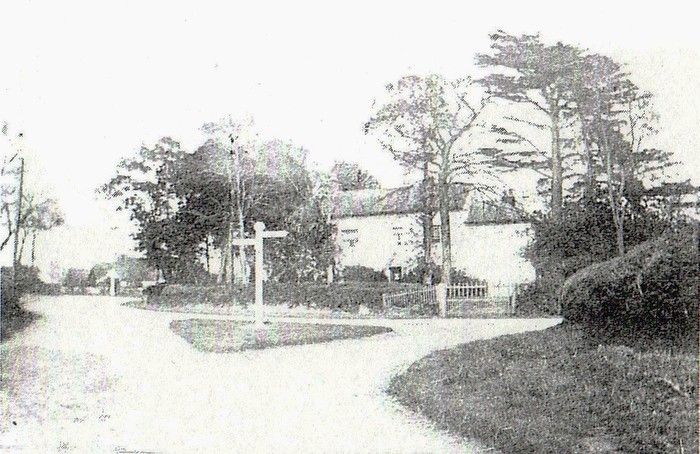
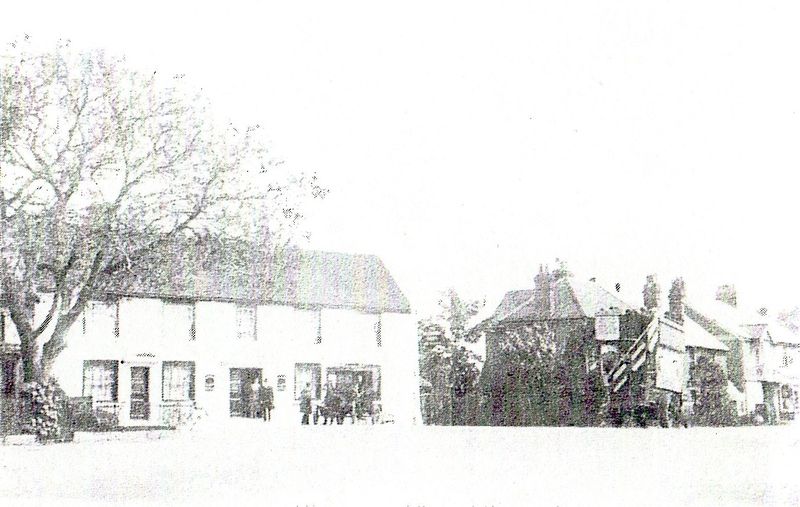
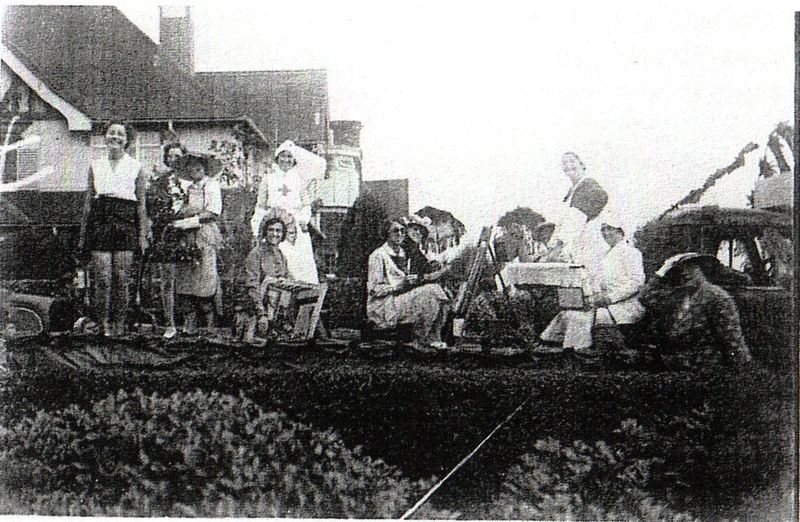
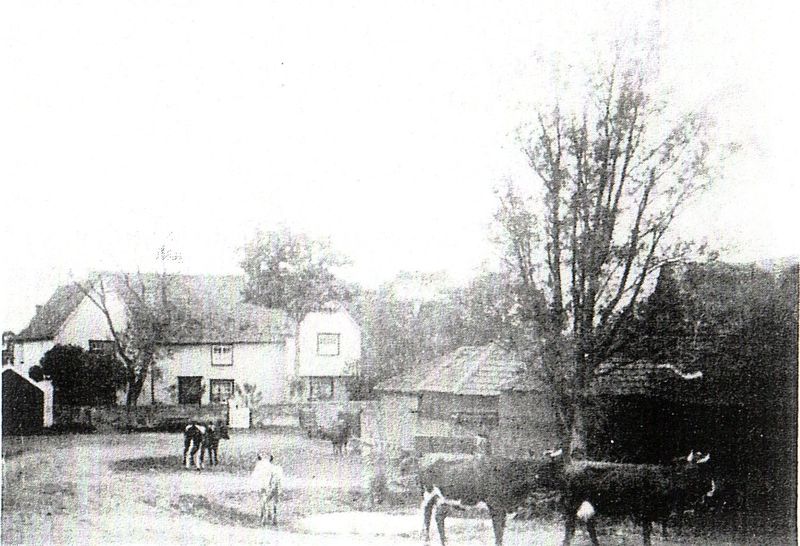
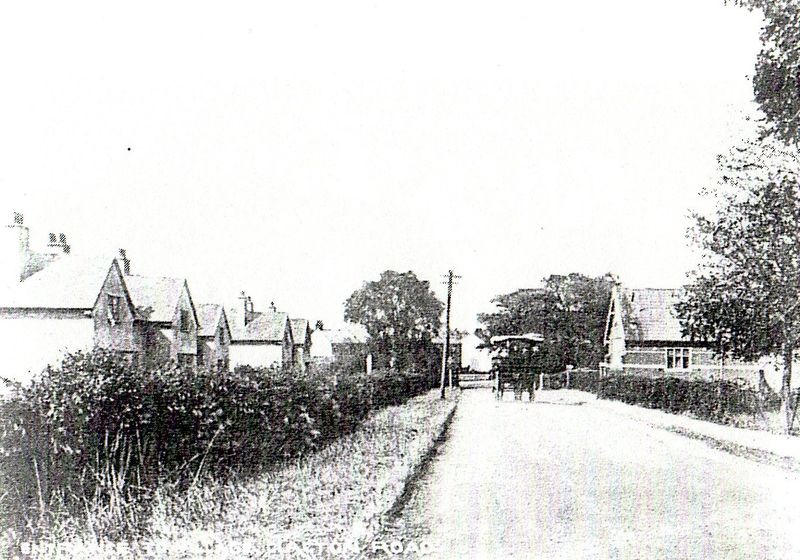
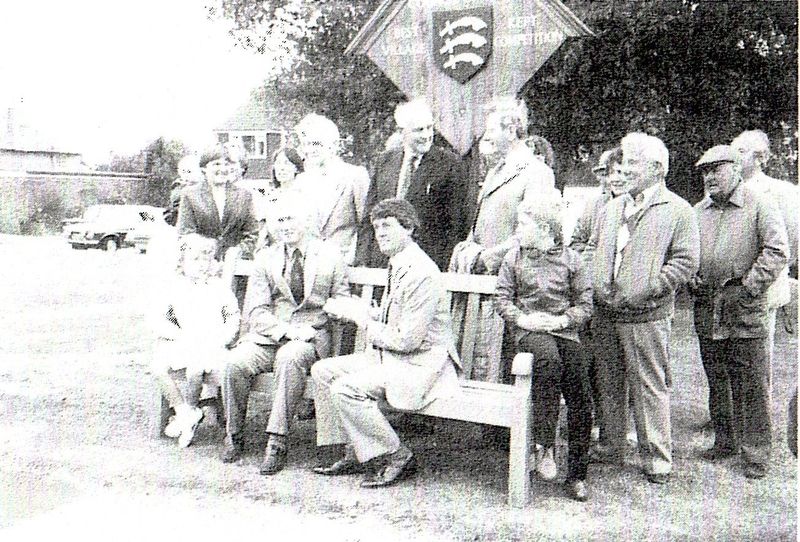

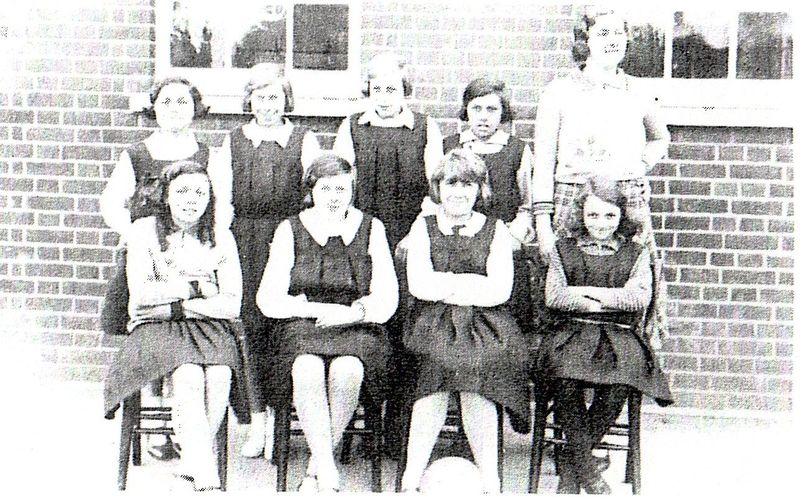
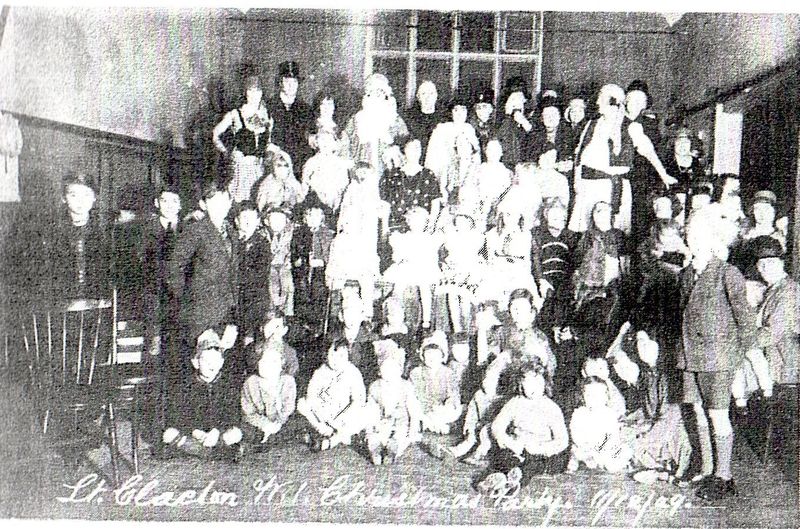

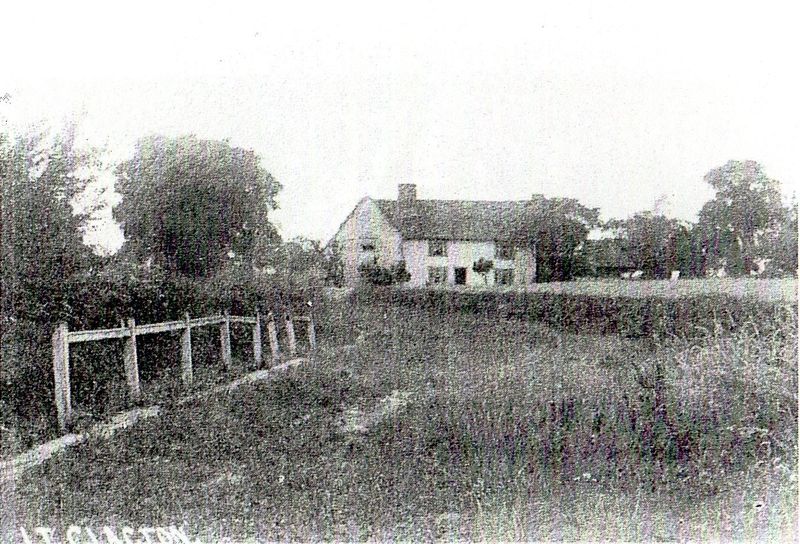
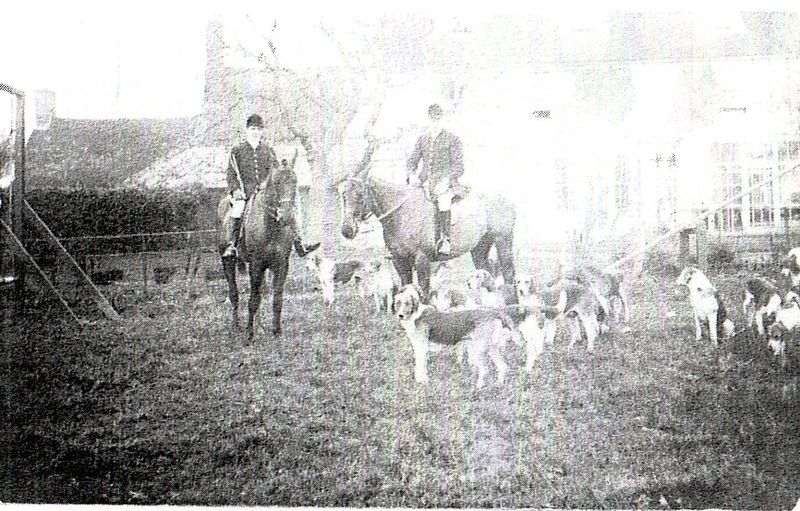
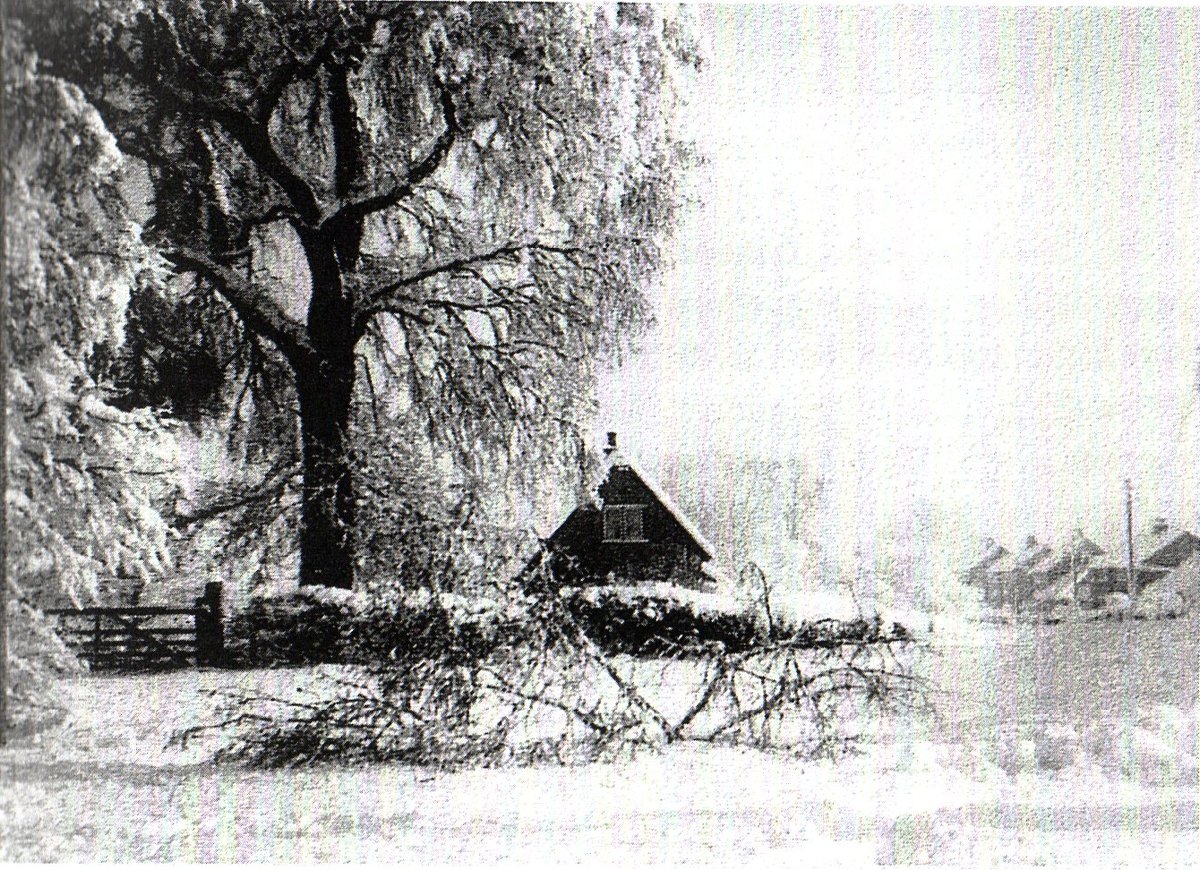
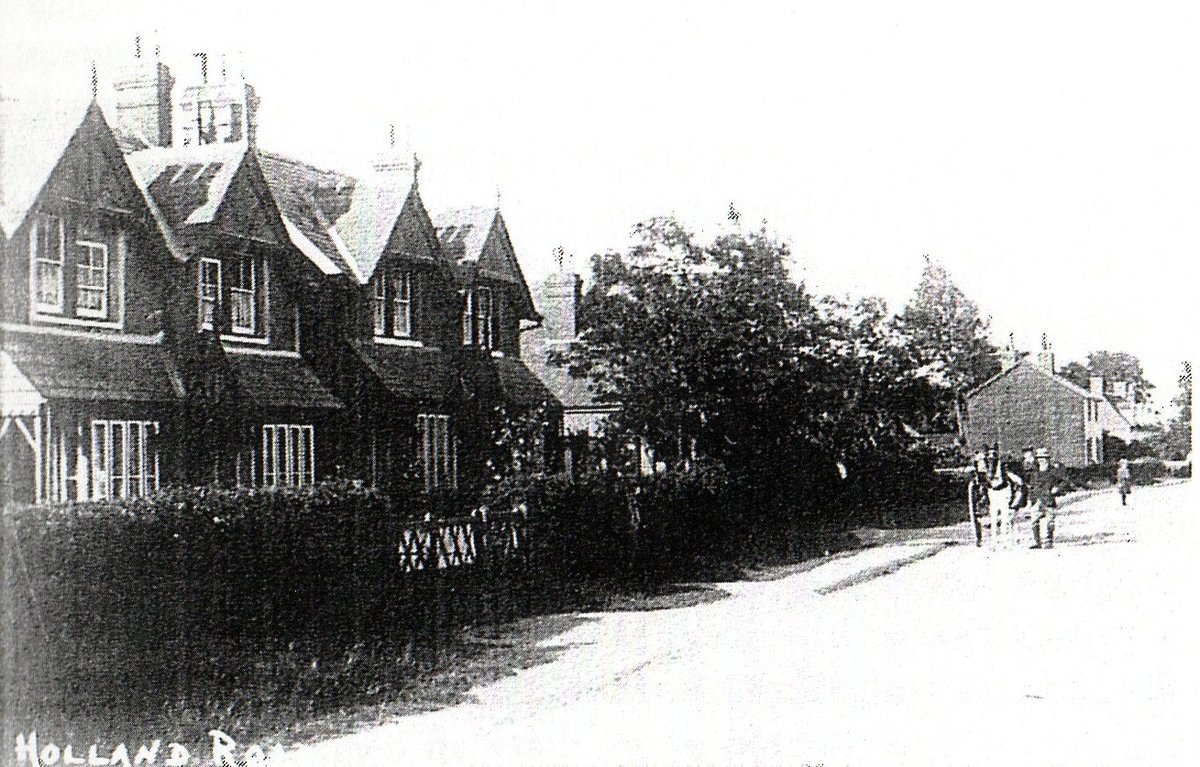
THE PARISH CHURCH OF ST. JAMES
A hundred years seem but a short span in the life of a parish church that has existed since Norman times, but undoubtedly they have been the most eventful in its history.
In 1894 the Rev. William Green had been Vicar for forty-four years and he was to continue in that office until 1901. A kindly and popular clergyman for more than half a century his death that year was a great loss to the parish. Few had known any other vicar, but his successor, the Rev. Frederick Peel-Yates, soon proved to be equally popular. In 1910 he generously purchased, for £200, the patronage from the Lord of the Manor (the Nassau Trustees) and had it transferred to the Bishop of St. Albans. It passed to the Bishop of Chelmsford after that diocese was formed.
The Church at this time was beautified by the provision of a new altar and cross. There was, however, continuing trouble with children using the churchyard as a playground and causing damage. That the Diocesan Quota was only 13s.6d. (67p.) in 1906 can hardly be credited today.
In 1912 the Rev. Arthur Evans was appointed Vicar and remained for twenty years until his retirement due to ill health. In discussing the church fete, in 1914, the Vestry Meeting “agreed to ask Mr. Woods, of The Moonlight Follies, to furnish the entertainment for July 24th,” only a few days before the outbreak of the First World War. It was about this time that the vacated School in London Road was taken over as the Church Hall.
In 1925 the P.C.C. agreed to raise the salary of the organist to £20 per annum and the salary of the organ blower (an unenviable task) was raised to £3! Three years later the Lady Caretaker at the Hall was placated with a bonus of £1 a year!
Considerable repairs had to be carried out to the Church fabric during Rev. Evans’ incumbency, the bells were re-hung and the churchyard extended.
The next Vicar, the Rev. Max Wontner, was an outstanding character, an author and playwright. In April 1935 the P.C.C. expressed its appreciation of all that had been achieved since his induction only three years earlier. Electric lighting was being installed, the Church had been “improved beyond all expectation.” The services were better supported and the Easter communicants had reached a record 107. In spite of all this the bank balance was higher than ever before! There was concern that he might leave for a larger parish and this remarkable testimonial concluded with the appeal “Stop with us as long as you can Vicar.” Indeed he did stay on until his death fifteen years later.
In 1939 the former singer’s gallery was closed when a new and larger organ was installed. Then came the upheaval of the war. Congregations were maintained by the presence of soldiers stationed in the district, who compensated for those parishioners absent on national service or who had moved to safer areas. The army took over the Hall and the treasurer admitted the Church was very sound financially — but do not tell the Diocese!
Soon after the war the new East Window was dedicated and electric heating was installed.
In 1950 the Rev. Leah McCarthy was appointed Vicar and extensive repairs to the Church fabric again became necessary. The ancient font was restored in 1954 and from 1958 the old Victorian high pine box pews, in whose depths generations of children had hidden from successive vicars, were replaced by new ones donated in memory of former parishioners.
The Rev. C. V. H. Smith succeeded Rev. McCarthy in 1961 and shortly afterwards a monthly family service was begun and the Bishop inaugurated a Christian Stewardship Campaign. In 1969/70 the large organ was sold to Christchurch, Greenwich, for £200. A smaller organ was installed and the gallery was once more opened up.
After Rev. Smith’s retirement the Rev. William Branch was appointed Vicar in 1974 and his induction service was followed by a wine and cheese reception. The Bishop was pleasantly surprised by this after endless cups of tea!
In the meantime a new Vicarage was built and the old one sold and then in 1979 the Church Hall was disposed of. Again the aging Church building needed attention.
Rev. Branch was followed in 1980 by the Rev. Eric Nugent and the Rite A Communion Service was introduced for the first time. A generous bequest of £11,000 from Rev. Smith, the former vicar, was gratefully received. Owing to Dutch Elm disease, the dead elms in the churchyard were cut down and conifers put in their place as a stop-gap. The planting of new trees, donated in memory of loved ones, was begun in 1990.
In 1981 the benefice was united with Weeley.
The Quota, or Family Purse, now began to soar. In 1986 it was £4,971 and when in 1992 it had reached £9,941 the Church defaulted for the first time. The ageing Church fabric required increasing expenditure and necessary repairs to the ancient south porch cost nearly £10,000 in 1993. That same year the new Parish Room on the north side was dedicated by the Archdeacon of Colchester.
On 6 June 1994 the Rev. David Newman was inducted. Now, in looking back at the remarkable achievements of the past century, tribute must be paid to the priests and parishioners who have so loyally served their Church and have maintained the Christian Faith in Little Clacton — a Faith that is timeless.
LITTLE CLACTON METHODIST CHURCH
In 1851 the Chapel at Little Clacton was built and opened. Before that services were carried out in a thatched cottage on the east side of the green. The adults usually filled the large downstairs room of the cottage and the children sat on the stairs leading to a room used for the storing of apples.
The Wesleyan Methodists had been holding services in Little Clacton for some time when, in 1851, the present Church was built, so that by 1894 it had already been used for worship for forty-three years.
At that period the several local families who regularly attended here were still regarded as ‘chapel folk’, but their loyalty was respected and the little community flourished. In course of time the former Wesleyan Chapel has become the Methodist Church. Although, sadly, its membership has diminished, it now maintains a close and happy relationship with the Parish Church.
A hundred years ago the little building was lit by large oil lamps and it was heated by two tortoise stoves — presumably slowburners! These were tended by a lady caretaker for the munificent sum of 12s.6d. (62½p.) a quarter.
Music was provided by a small orchestra with violins, flute, double bass and organ and there was usually a choir.
Such was the support given to the Chapel that in 1898 it was possible to add a schoolroom and kitchen which were built chiefly by free labour, evidence of the devotion of its members.
The Wesleyan Guild flourished for a long period and the Women’s Fellowship have been meeting regularly for more than forty years.
The Methodist Church is rightly proud of continuing to maintain its living and faithful Christian witness in the Village of Little Clacton.
ENGAINES COUNTY PRIMARY SCHOOL
Engaines was established in 1868 as a Parochial School in premises now occupied by Studio One in London Road. A hundred years ago the headmaster was Thomas Beardmore.
In 1894 the School must have been very gratified at the Inspector’s Report that it had improved “and has passed a very fair examination, and the children show interest in their work. Handwriting and spelling are both creditable and geography has been well taught. History is very fair and needlework is good.” This presumably covers every school subject at the time.
In recording its story over the past century it should be noted that the School moved to its present premises in 1914, a month after the outbreak of the First World War. It was called Engaines after the local manor of this name.
It might be assumed that the number of children attending a village school would remain fairly static, but this has not been the case with Engaines. At first there had been a slow increase to 128 when, in 1931, it lost its senior pupils to newly established schools in Clacton-on-Sea. It became a Primary School, except for a period during the last war, when its numbers were swollen, first by evacuees and afterwards then by local seniors. Then, in 1951, 61 children were admitted from Jaywick, because there was insufficient accommodation for them there. This number steadily grew and when, sixteen years later Frobisher School at Jaywick was opened, 176 went there from Engaines. Due to these fluctuations, from about 90 to 286, demountable classrooms had to be added and other alterations made to the premises.
The Log Books
A very full account of the School for most of the past century is contained in the Log Books which have been carefully maintained since April 1901. Among the daily routine of school life one catches glimpses of both local and national events and can trace the gradual change in the pattern of village education.
The Log commences with the reassembly of the School after Easter 1901 when there were 128 pupils and the following month, after a short stay, Mr. Jones the headmaster was succeeded by Mr. Harry Williams.
Those earlier years must now be fading from living memory and they seem to belong to a different world with the village children still leading a rural life as their families had done for generations. Slates and chalks were still in use as late as 1906 although officially abandoned the previous year. One of the earliest references in the Log is authority to the Headmaster to purchase from a Clacton draper the necessary calico for the girls’ use in needlework.
The attraction of local events such as agricultural shows, or help with the harvest, resulted in many absentees. Accepting this situation the Headmaster closed the School for a half-day when there was a local point-to-point meeting in 1911 and when Clacton Band Pavilion was opened in 1914.
Closure resulting from epidemic diseases was once almost an annual occurence. In 1902 it was diptheria (five weeks), in 1904 chicken pox, in 1905 measles, in 1906 whooping cough, in 1915 scarlet fever and so on.
On some occasions classrooms had to be cleansed and every pencil, pen and ruler dipped in disinfectant. Children were sometimes sent home with unclean heads and the first medical inspection is recorded in 1921.
Inclement weather also took its toll, for children came mostly on foot from every part of the parish. One day in March 1909 a total of twenty children struggled to school through the snow and next day only fourteen arrived. The tragic flooding of Jaywick in 1953 also had its impact when many of the children there, who were attending Engaines, had to be temporarily billeted in hotels. Then in October 1987 came the hurricane, still fresh in many memories, when the School was closed due to the widespread damage that it caused in the area.
There were occasional diversions. In October 1901 the children were taken to the Meet of Hounds on the Village Green. In November 1902 those who had not been absent or late during the week had the doubtful pleasure of hearing the Vicar’s phonograph — an early gramophone! The following February they were entertained by a lantern lecture on Victoria’s Glorious Reign. Lectures on the dangers of alcohol were almost an annual event and were obviously considered necessary.
When the School broke up for the Christmas holiday in 1906 the Vicar gave each pupil an orange, a kindly gesture that was doubtless appreciated when this fruit was a luxury.
More exciting was the prospect in 1905 of an organised visit to London, and pupils began saving their pennies in January. It was not until October however that no more than nine boys accompanied the Headmaster on the trip.
Shadows of War
There had been great excitement the previous September. On the 9th the Log briefly noted “The soldiers have considerably affected attendance this week.” Three days later — “The troops are falling back on Clacton” and the next day “Troops fighting all the morning at Weeley.” This is indeed a succinct record of the memorable army manoeuvres at that time when a sham invading force penetrated several miles inland and there were some mock battles. It must have been difficult for the pupils to concentrate on their studies when their windows looked out on to the main road from the coast.
Two years earlier the School had celebrated the end of the Boer War and subsequently came the First World War. The Headmaster was sworn in as a special constable and there were two air raid warnings that upset the children. The sight of a motor ambulance proved a unique experience and in July 1916 the School closed so that the pupils might see King George V pass through the village during a tour of inspection.
Far more traumatic was the Second World War. In 1939, upon its outbreak, 91 evacuee schoolchildren descended on Little Clacton from London and were added to the 96 village children then on the roll. On the night of their arrival some of them, and their escorts, were allowed to sleep in the School hall which was strongly disinfected and swept by the caretaker next day! A shift system of education then had to be introduced.
Some of the evacuees appear to have returned home and only 54 remained the following May, when the sudden threat of invasion caused them to be sent elsewhere. Schools at Clacton-on-Sea were closed and when the autumn term commenced 61 seniors, who had remained in the town, were sent to Engaines, once more swelling their numbers. Two air raid shelters had been constructed and these were occasionally used during daytime alerts, but there were no serious incidents.
In July 1943 hot dinners were cooked in the School for the first time because the shortage of petrol prevented them from being brought from Clacton Senior School. Three years later dinners were being brought from St. Osyth C. of E. School and then in 1949 Engaines was provided with its own kitchen.
1944 bomb in the School field?
In June 1946, 82 children and staff visited Epping Forest on a Victory outing.
National Events
Other national events are reflected in the School Log. In June 1902 there was a week’s holiday in deference to the wish of Edward VII whose Coronation had been then planned but had to be deferred because of his illness. Another week off was granted at the next Coronation in 1911 and in 1937 the pupils heard a broadcast of the Coronation of George VI on a powerful HM “wireless set” that had
been loaned to the School.
One of the handicaps of the original premises was highlighted by the Inspector’s report in 1909 — “There is practically no playground at this school and the children in consequence use the road, which is however, rendered very dangerous by motor traffic.” Heating was by three solid fuel stoves and when there was an east wind the children suffered from smoke and sulphur fumes. There was a pressing need for better premises and in July 1911 the Log recorded a meeting of Managers and Advisory Committee to select plans for a new school. This was built and opened three years later.
Various teachers came and went, and in the early days one of them proved troublesome and there was an embarrassing confrontation on the small playground. There was also Rose Coe who was taken on as a monitor (pupil teacher?) in 1901 and three years later was being paid only 5s. (25p.) a month. Her father complained that he could no longer keep her on this pittance so she was persuaded to stay on for
an annual salary of £6.
In January 1908 two gipsy children, aged seven and nine, were admitted to the School and they did not know the letters of the alphabet. Three months later a poor little girl, barely three years old, had been sent to school and did nothing but cry all day and it was recommended that she should be kept at home.
Annual prize giving was first mentioned in December 1920 and in November 1930 Horlicks Malted Milk was being provided when it was noted that 75 out of 128 children took advantage of this facility.
Just after the last war, in September 1945, the County Council generously offered the children a wireless set costing £26 if the School would contribute £21 from its funds. This was only possible after a lapse of three months by organising a concert to raise the money.
Sporting Activities
Little attention was at first paid to sport and indeed the facilities were limited. During the summer term in 1902, however, the Vicar offered the use of an adjoining meadow as a playing field. Two cricket bats, six stumps and one ball were borrowed from the disbanded local club but few boys had had any previous experience of the game! Then the following year a football was purchased and within a week a game was played against Weeley. Once commenced these games would have become a recognised part of the school curriculum.
In August 1933 was the first mention of a School Sports Day. In 1936 swimming lessons were being taught in the sea, 2d. (1p.) being charged for each child per session by the town’s Entertainments Manager, presumably for changing accommodation.
After the war the children also took part in rounders, hosting an annual Rally in 1979, winning the Area Final on two occasions and achieving the distinction of winning the North East Essex Area Final in July 1994.
There is a fascination in the earlier records of the School, which should not detract from more recent events, faithfully entered in its Log. To touch on them but briefly, mention should be made of the retirement in 1965 of Mr. Edwin Cox after a record thirty years as Headmaster. In 1975 there was a memorable 5 day visit to the Isle of Wight and three years later an enlargement of the playground was paid for by the active Parents Association who also funded the new Library in 1988. Then there was the mysterious fire in December 1990 that destroyed storage sheds in the playground.
In March 1993 Engaines became a fully delegated locally managed School, with the Govenors taking over many responsibilities previously carried out by Essex County Council. 5 Govenors’ working parties were set up to deal with premises, personnel, finance, curriculum and marketing matters.
In January 1995, following conversion, one classroom will be a purpose-built reception classroom enabling the school to take in children coming up to their fifth birthdays earlier than has been the case in the past. At the end of 1994 the governors agreed to apply for Grant Maintained Status…..
LITTLE CLACTON WOMENS INSTITUTE
The Little Clacton W.I. is now entering its seventieth year for its rules were signed on 15 December 1925. Mrs. Willmot became the first President and Mrs. Gerard the Secretary. Two of the founder members were Miss Carter and Mrs. F. Taylor.
Unfortunately early records have not survived but it is recalled that the W.I. was soon flourishing and its monthly meetings were well attended. They always included a speaker and a social half-hour which might take the form of an entertainment by the choir or drama group, a piano solo, a debate, ‘twenty questions’, or a ‘sing, say or pay’ when members who could neither sing nor say paid a penalty of 2d.
Within a week of the outbreak of the war in 1939 the President, Mrs. Gillings, rallied the members and they determined to assist the war effort in whatever way was possible. At first clothes were made for evacuees. Later knitting needles were busy producing pullovers, socks and other comforts for those serving in the forces and for the local Civil Defence corps. At one time 70 parcels were dispatched.
In 1941 jam making became the order of the day. At one session 196 lbs. were made and a ration of sugar was allowed but members were only permitted to have ‘tasters’ by removing the ‘scum’ when cooking.
By 1944, with sixty members, there was a full programme in swing. Produce shows, classes on the renovation of clothes, handicraft classes, outings, tea parties for the elderly and children and whist drives which funded gifts to the forces and Red Cross.
For several years some of the members collected used stamps for charity and in December 1946 it was recorded that 7356 were sent to a London hospital.
Food rationing was still in force when, in September 1949, it was announced there would be an allowance for the monthly meetings and though it was agreed that buns should still be bought locally the butter proved a welcome addition.
In February 1953 a ballot was held for a seat at the Queen’s forthcoming Coronation and Mrs. Vincent had the honour of attending. Twelve years later it was Mrs. Hines who was the lucky member to attend the W.I. Jubilee Royal Garden Party.
In September 1954 a lady aged 102 was present at a meeting and in contrast it was agreed about this time that mothers might bring their babies with them. For some, however, it was found that evening meetings would be more convenient and for this reason Engains W.I. was formed nine years later. Inevitably this resulted in a decline in membership which had just exceeded a hundred — Mrs. Snowdon being enrolled as the 100th member in November 1962 — but best wishes for its future were sent to the newly formed Institute.
Other undertakings worthy of record were the embroidery by members of a cloth for the President’s table, the purchase of new W.I. crockery and the knitting of woollen squares for Hamilton Lodge and local organisations.
In October 1971 the W.I. Hundred Group was formed by Little Clacton, Engains, Tendring, Thorpe and Weeley. Eight years later Little Clacton joined Engains in holding the first mini-market to benefit local charities and from the following year it was decided to man a stall at the Village Fete, a Football Tombola being organised.
The Diamond Jubilee of the Institute was celebrated by a dinner at the Masonic Hall, Clacton.
During the ensuing years the Institute’s activities have continued unabated — Spring Group Meetings, produce shows, mini-markets, jumble sales and coffee mornings. For several years pensioners have been invited from London to a summer tea party, there has been an August outing and combined Carol Services at Christmas. The Little Clacton W.I. has indeed become an essential element in village life and looks confidently to its future.
THE VILLAGE HALL
The Little Clacton Rifle Club was a thriving local organisation. With the arrival of Rev. Max Wontner the club was asked if it would be possible for them to change premises. As this suited the now requirements of the Club, Mr. H. Lilley (Lodge Farm) was approached for land and Mr S. Spooner (The Leys) asked for his support — they agreed. Mr. G. Bareham (village builder) was put in charge of the volunteer work force and obtaining materials cost price — the money for the materials was raised by selling non profit making shares, 5s (25p) each to village folk. The building of our village hall was completed in 1935 and remains more or less as we know it today. With due ceremony on 20 May 1935 the Hall was opened by the Lord Lieutenant of Essex, Sir Richard Colvin. This was the season of the Silver Jubilee of King George V and the Rifle Club Hall, as it was then known, served to commemorate that occasion.
The Hall had an attached kitchen, ladies’ toilet (the men’s was outside), billiard room and rifle range and in practice was used as a village hall, becoming a venue for public meetings, whist drives and social events.
During the war entertainments were organised in the Hall by troops billeted in the area and they were admitted to the weekly Saturday night dances at a reduced rate. A party of Highlanders was offered the free use of the Hall to celebrate New Years Eve in 1940 providing they accepted responsibility for any damage they caused.
After the war the adjoining playing field, leased to the Rifle Club, was conveyed to trustees and in 1966 the Club sold the Hall to the village for £1 and its management passed to another group of trustees. After considerable negotiation the Harold Lilley Playing Field Trust and the Village Hall Trust were amalgamated and are now managed by one committee.
Having now become accepted as the Village Hall the building was improved in 1969 with a front extension and the addition of new toilets and cloakrooms. Subsequently a new roof was provided and when the Rifle Club was disbanded its shooting range was converted to a store and a small kitchen/bar area was put in. Within the last two years the Hall has been further improved with double glazing, a larger fitted kitchen and bar area and new toilets and facilities for the disabled.
All this has been made possible by fund-raising events, notably the August Bank Holiday Fetes and Car Boot Sales and by the voluntary efforts of many villagers over the years. The Hall has thus become a warm and convenient meeting place for the community and is used for a great variety of organisations, from Playgroup to Darby & Joan Club. Confidence in its future is evident from proposals to add an additional small hall as soon as this is possible.
DARBY AND JOAN CLUB
The Little Clacton Darby and Joan Club was founded in December 1954 and dedicated by the Vicar, the Rev. L. B. McCarthy and by the Rev. H. Sutton from the Methodist Church. Monthly meetings were originally held in the former Church Hall but the venue was changed in 1960 to the Village Hall opposite.
The first President was Mrs. Stephens and she was succeeded in 1958 by Mrs. Kinder when the Club became a W.R.V.S. Club. By 1971 there were 145 members, the subscription was 10p and tea cost 2½p. By 1982, when the Club celebrated its 25th anniversary, the subscription had risen to 50p. and tea to 10p. With continued inflation and a regrettable fall in membership the subscription has now increased to £4 and tea to 30p.
Many activities take place. The highlight of the year is the Christmas Lunch which has been held ever since the Club was started. Many happy holidays were organised in the summer and though these are now discontinued, day outings are still arranged. Whist used to be the game usually played but bingo has now proved more popular.
Forty years on, the Club continues to flourish and is proud to remember those who have rendered such loyal service — the succeeding Presidents, Mrs. Barrell, Mrs. Bell, Mrs. Jones and others who have held office.
THE CRICKET CLUB
Little Clacton Cricket Club was re-formed in 1962 and played on the Harold Lilley Playing Field prior to moving to the sports ground at Plough Corner.
At first the Club played friendly fixtures, but in 1975 it was one of the nine founding clubs of the Greene King League, now the Lancaster Garages League. After several successful years the Club spread its wings, transferring to the Suffolk Alliance League and enjoying many stimulating seasons.
During its early years the Club also ran a Colts team to encourage youngsters in the game and have recently been gratified by the number of young cricketers who have joined.
Honours achieved by the Club in the Lancaster Garages League were as winners in Division Three in 1986, runners-up in the Lancaster Garages Plate in 1989 and the Lancaster Garages Cup in 1993.
Despite the loss of several senior players the Club is pleased to be able to record a very successful past season with ten wins in a dozen games. The friendly eleven have enjoyed these contests against local and distant opposition and their drinks in the Blacksmiths’ Arms!
In looking back over some thirty years many names come to mind, particularly the individual records of former players. Sid Lucas who holds three records namely for the most games (727), for the most runs (12,097) and the most catches (442) and Robin Frost with a record 711 wickets. The Club also recalls other loyal and skilful players — George, Jim, and Peter Grubb, Dick Cole and the only one still playing from the re-formed Club, Arthur Grimwood, who has held the post of Treasurer for the past twenty years.
ENGAINS WOMENS INSTITUTE
It is recalled that this was formed because a little boy (Roger Poole) snored loudly during afternoon sessions of the Little Clacton W.I. and his mother asked if there was a chance of starting an evening Institute which she could attend without him!
As a result of this the Engains W.I. was formed at a meeting held on 22 May 1963 attended by 31 ladies and presided over by Mrs. Stobart the County Chairman. It was agreed that members could join from the age of fifteen and that there should be a committee of twelve. Members were recruited paying an initial 5s. (25p.) each.
At the first monthly meeting a committee was duly elected and Mrs. Poole became the first President and Mrs. Purkiss and Mrs. Sayer Vice-Presidents.
The first year proved to be an active one — there was a mannequin parade at the Village Hall, there were coffee mornings, beetle drives and visits to the CADS and to Colchester Rep. A netball team was formed, and a ‘Buffet and Cabaret’ was held and also the first of the now famous Christmas Parties at a cost then of 1s. 5d. (6p.) for members and 2s.6d. (12p.) for husbands and friends. More daring perhaps was an ‘ankle competition’ judged by a gentleman speaker!
The years that have followed have been equally active and the membership has increased steadily to 60. There have been quiz evenings, summer supper parties annually, fashion shows, country walks, grant-aided classes in everything from needlework to public speaking, the annual pantomime, carol concerts and entries into the Tendring Show and the County Show. Members enter badminton, rounders and the Driver of the Year competitions and one lucky member is able to go to the W.I. College, Denman, for a week each year to learn a subject of their choice. Much fund-raising is done throughout the year to help finances and to assist local charities. This is achieved by holding coffee mornings, tea afternoons, jumble sales and so much more.
The Engains W.I. is indeed proud of its thirty-one years history and looks forward hopefully to the future.
RECREATIONAL TRUST
In 1968 the Parish Council purchased 7.2 acres of land at Plough Corner for £1,000. In 1974 they purchased a further 10 acres for £3,100. The purpose of this was to provide the village with a recreation field. The Council sold off part of the land to the Post Office and ECC in 1973/4 for £9,500.
Parishioners at a Council meeting decided the money raised should be spent on erecting a pavilion — the shell of which costing £9,000 was completed in 1977.
A Charitable Trust was set up in 1982 — with 3 councillors becoming trustees — together with members drawn from other interested parties. The cost of equipment and maintenance of the field — has been met by the hard work of committee members and helpers raising funds in various ways.
In 1987 it was decided by the Trust to install an all weather hard surface floodlit sports complex costing £48,000. A grant of £12,000 was made by Parish Council. The complex was opened by Julian Ridsdale M.P. in June 1988.
In 1994, Land (Part of the car park) was ceded back to Parish Council to enable the A.T.C. (Air Training Corp) to build their local headquarters.
Hopefully this Recreation Ground and facilities will be enjoyed by parishioners and others for many years to come.
LITTLE CLACTON MODERN SEQUENCE DANCE CLUB
This Club was started with 113 members on 29 April 1969 as an Old Time Dance Club. The Village Hall was booked every Thursday evening and the dancers were charged 1s. (5p.) at each session.
Several dances have been held at Clacton Town Hall and have attracted over 200 folk.
With the trend to disco and modern dancing the Club has changed its original designation and has become the Modern Sequence Dance Club. It has now flourished for twenty-five years and though there has been a slight fall in membership it continues to meet in the Village Hall every Thursday evening.
LITTLE CLACTON COMMUNITY CARE
In. 1983 the Rev. Eric Nugent suggested that a Community Care Scheme should be started and a public meeting was held when it was agreed to implement his proposal. A committee was formed and Rev. Nugent consented to be Chairman.
A Car Scheme was then inaugurated to transport those in any age group who needed assistance, to hospital or to receive medical treatment. Various events were held to raise the necessary funds and grants were applied for.
A newsletter has become an annual publication to keep people in touch with the scheme and in 1984 the logo of the ‘Jubilee Oak’ was chosen and notepaper printed accordingly.
The first New Year Party took place in 1986, originally intended for residents over 65 living alone and these became so popular that for a time two parties were held annually.
After a great deal of work by Mrs. June Goodier and Mrs. Hazel Funnell, Community Care was finally granted charity status in 1990.
The Car Service is still the main activity of the organisation, but during the past year weekly get-togethers have been held in the Parish Room.
The committee keeps an eye on local matters, e.g. doctors’ surgeries and chiropody clinics and is affiliated to the Tendring Council for Voluntary Services who pass on information. It is hoped that this praiseworthy organisation will continue its useful and caring service in Little Clacton for many years to come.
LITTLE CLACTON CARPET BOWLS CLUB
The formation of a Carpet Bowls Club had been mooted unsuccessfully for some time when, at a meeting of the Village Hall Management Committee in September 1985, the Chairman said he would like this matter to be resolved once and for all. It was then decided to call a public meeting to ascertain whether there was sufficient backing in the village for such a club.
The meeting was held about two weeks later and the proposal gained immediate support. The Club was thereupon inaugurated and was fortunate in attracting both experienced players and organisers.
It proved to be a great success. The Weeley Club gave the benefit of their experience and equipment was purchased with a loan from the Village Hall which was paid off from the fees collected. The Club became affiliated to the Essex Carpet Bowls Association and joined the County-run local League.
At the end of their first season the Club had the distinction of emerging not only as League champions but also as Essex County champions. This initial momentum has been maintained, for in their nine years the Club have held the local League trophy on a total of seven occasions, have been runners-up twice and have been County champions twice and runners-up twice.
The Club has also its own trophies and enjoys an Annual Dinner each October as well as a Christmas party - a mixture of bowls and jollification with a light meal thrown in.”
Because of limited space the Club have had to restrict its membership to a maximum of 45 and though there are a few vacancies they hope soon to make good this shortfall. Meetings are held on Monday mornings and on Tuesday and Friday evenings and visitors are most welcome.
OPENING OF THE BYPASS
Our Little Clacton Bypass is due to open early in 1995. We look forward now to the beginning of the 21st century.
Who knows what our village will look like in 100 years time?
